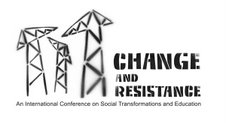Dobrochna Hildebrandt-Wypych PhD
Adam Mickiewicz University
The paper takes its point of departure in the phenomenon of East German systemic change that gave way to various practices of reconstructing collective memories and reworking the past experiences of the ‘nonexistent nation’. The unidirectional and asymmetrical process of German integration delegitimated GDR1 culture and produced – after the euphoric beginning – the sense of loss and dislocation among the New German States inhabitants. The new phenomena of ‘East German identity’ and Ostalgie can be perceived as the collective attempts to re-legitimate these lost personal experiences, symbols and rituals – all ‘positive memories’ of the GDR. As M. Blum puts it, since the mid ’90 ‘mementos from the former GDR have suddenly become en vogue2. The paper argues that this outstanding comeback of GDR relicts is not – as some claim – merely the glorification of the past based on resentments and negation (East German identity as Abgrenzungsidentität3 – ‘a fencing identity’). It is located not entirely in the past, but also in the present and future; it constitutes an attempt to overcome ‘the destabilizing juncture between the old and the new, between a stable and recognizable past in a well defined nation state and a presently evolving culture that is in the search of foundational myth’4. ‘The memories from the past can also function as modes of adaptation to the culture of a new (Western) capitalism, as well as counteractions against uniformity of global culture and economy. The idea behind the re-construction of East German identity can be more then just a negotiation of the past; it can also function as challenge to a uniformity of global world, a way out in the blurred and unpredictable future.
1 German Democratic Republic
2 Blum M. (2000), Remaking East German Past: ‘Ostalgie’, Identity and Material Culture, The Journal of Popular Culture, Volume XXIV, 3/2000. p. 229-253
3 Pollack D. (1998), Ostdeutsche Identität. Ein multidimensionales Phänomen, w: Meulemann H. (red.), Werte und nationale Identität im vereinten Deutschland. Erklärungsansätze der Umfrageforschung, Opladen
4 Jozwiak J.F., Mermann E. (2006), The Wall in Our Minds? Colonization, Integration and Nostalgia, The Journal of Popular Cuture, Volume XXXIX, 5/2006, p. 780-795
Subscribe to:
Post Comments (Atom)

No comments:
Post a Comment